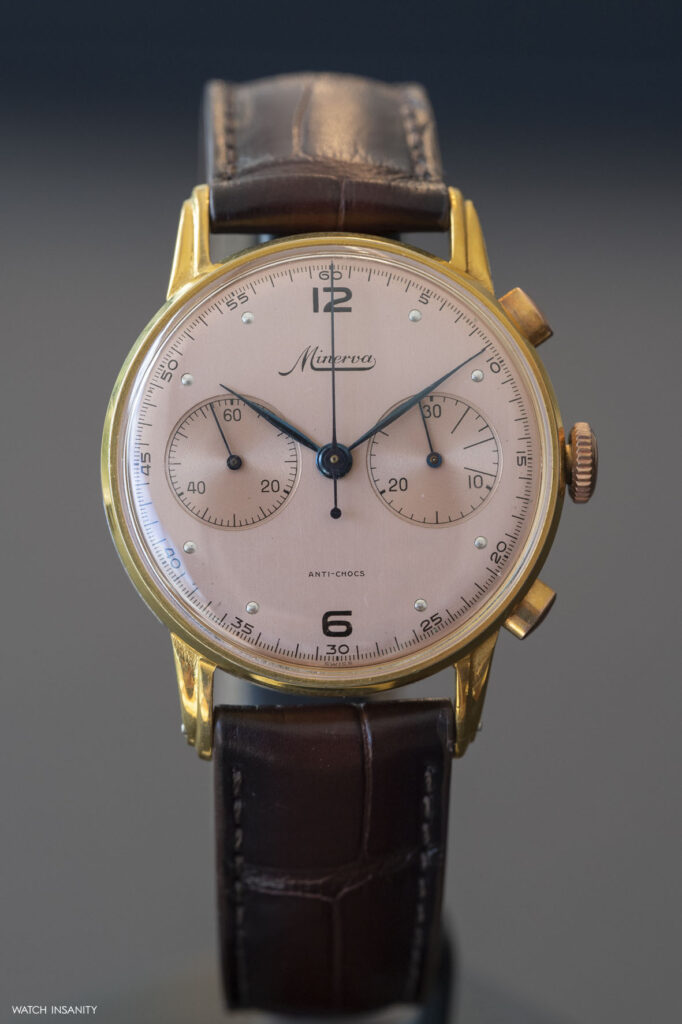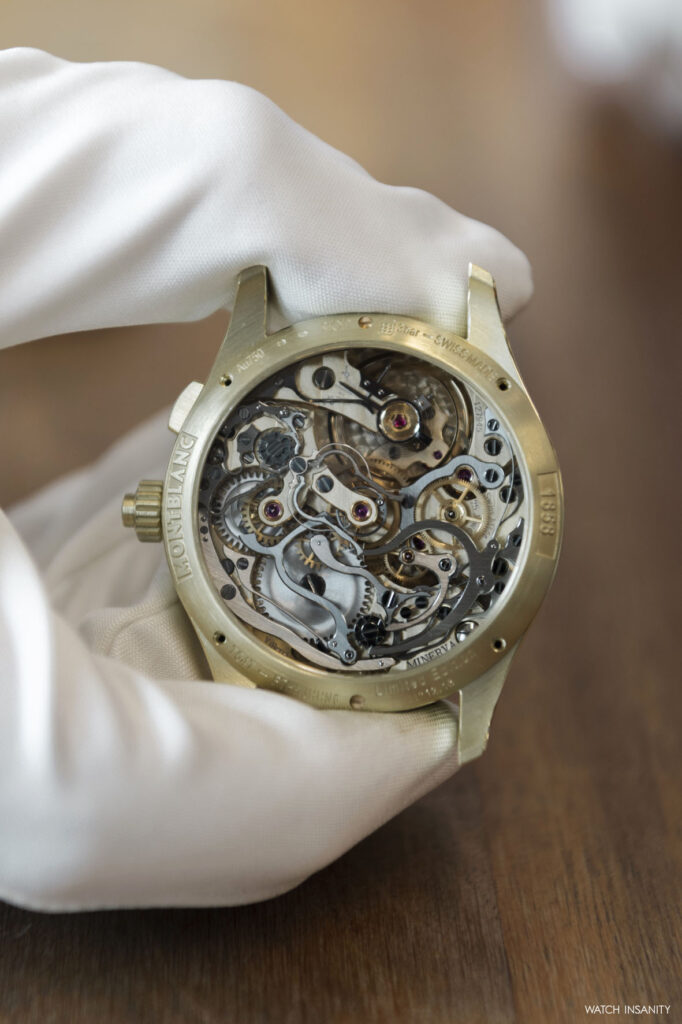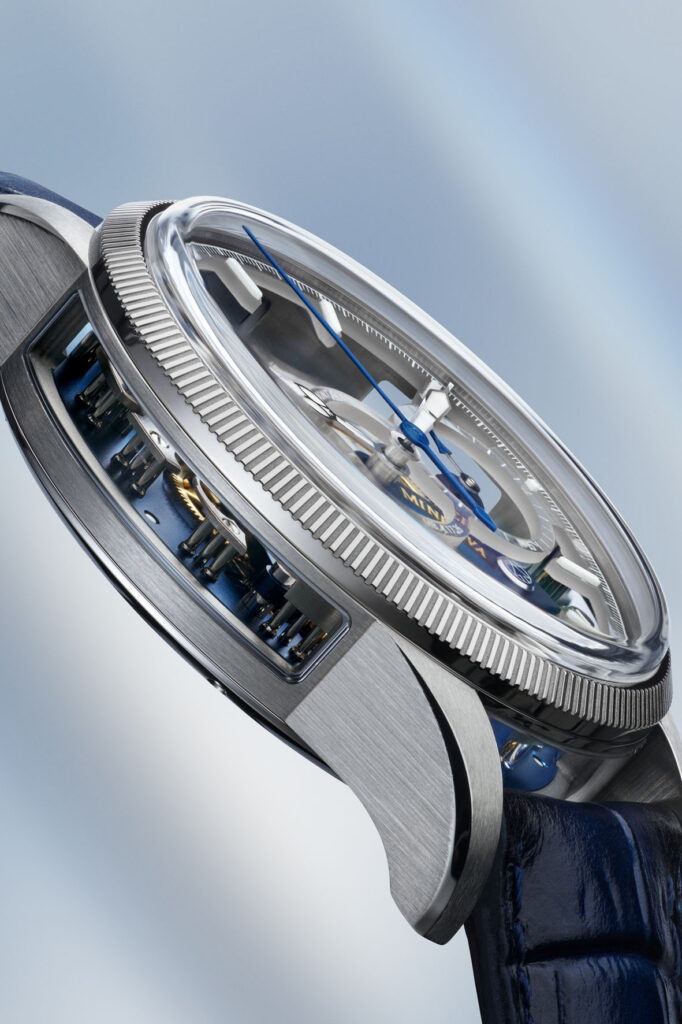Montblanc: Minerva and the monopusher chronograph
9 April 2024If you say ‘monopusher chronograph’ to a watch enthusiast, the mental image that will come up to their mind will be immediate and unequivocal: Minerva. The Swiss haute horlogerie brand, owned by Montblanc since 2007, has made this complication a kind of trademark since its launch. It is therefore no surprise that Montblanc’s most astonishing novelty at Watches and Wonders 2024 is the new 1858 Unveiled Minerva Monopusher Chronograph. A watch that is part of a long tradition made of dreams and mechanics.
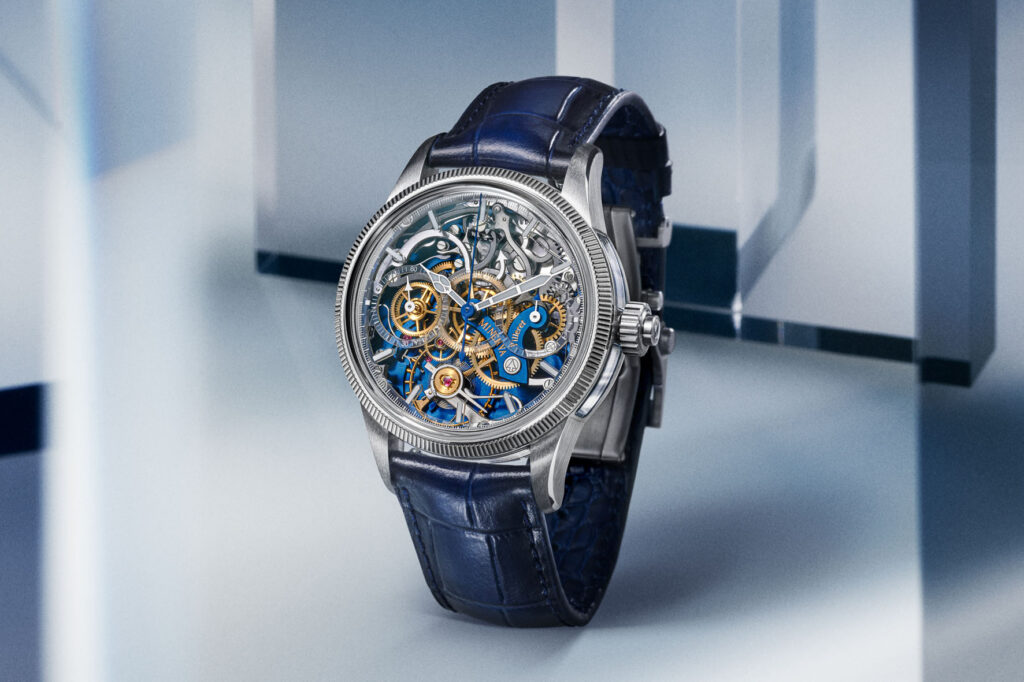
MINERVA AND THE MONOPUSHER CHRONOGRAPH
Those who know a little watchmaking history are aware that it is no coincidence if the number 1858 is part of Montblanc’s collections. In fact, it represents the year when watchmaking arrived in the small Swiss town of Villeret, still home to the Minerva company today thanks to a movement factory founded by Charles Robert and his brother Hyppolite. Over the years, the company grew in scope and prestige, registering the Minerva brand in 1886. In 1902, production moved to a modern building that would create mechanical calibres continuously for the next 100 years.
In 1908, Minerva created its first chronograph movement, the 19.9 calibre, and over the following decades, honed its expertise in the creation of precise and finely finished chronograph calibres. To understand the relationship between Minerva and chronography, it is useful to read this article. Shortly after the Calibre 19.9, the company created one of the first monopusher movements for wristwatches, the Calibre 13.20. This was a chronograph with a column wheel, Breguet balance spring and 17 jewels, designed as a monopusher but also available, after 1940, in a configuration with two pushers and 30- or 45-minute counters. It was one of the few chronograph calibres on the market at the time of its launch, and it was developed in collaboration with Dubois-Depraz. The feature that made the Minerva Calibre 13 recognisable was the unusual position of the pushers: instead of being located between the crown and the lugs at 30°, they were moved towards the lugs at 37° from the crown.
The Calibre 13.20 was followed by the 17.29 in 1929, and its evolution, the 16.29. All exceptionally popular movements, with beautifully finished plates and details that still characterise them today. Among them, the classic V-shaped bridge, recalling not only the first letter of ‘Villeret’ but also the shape of the valley that is home to the town. Equally iconic of the brand is the lever with the ‘devil’s tail‘, inspired by Minerva’s historic arrowhead logo.
MODERN EDITIONS SIGNED BY MINERVA AND MONTBLANC
Almost all of the modern monopusher chronographs produced by Minerva feature this obvious ‘heritage imprint’ of the brand. Think of the Montblanc 1858 Split Second Chronograph LE 18 from 2021 with a lime gold case, or the Montblanc 1858 Monopusher Chronograph Origins Limited Edition 100, a tribute to a chronograph made by the manufacture in the 1930s.
In more recent years, then, Minerva has inaugurated a new and unexpected line for this type of watch, within which the 1858 Unveiled Minerva Monopusher Chronograph presented at Watches and Wonders also positions itself. A line that started with an idea: turning the calibre upside down and making it visible through the dial.
THE INVERTED CALIBRE
An approach developed in 2022 with the first 1858 Unveiled Secret Minerva Monopusher Chronograph available in a limited edition of 18 with a lime gold case or one made of 58 stainless steel pieces. A watch that featured for the first time a skeletonised iteration of the historic MB 16.29 monopusher chronograph calibre.
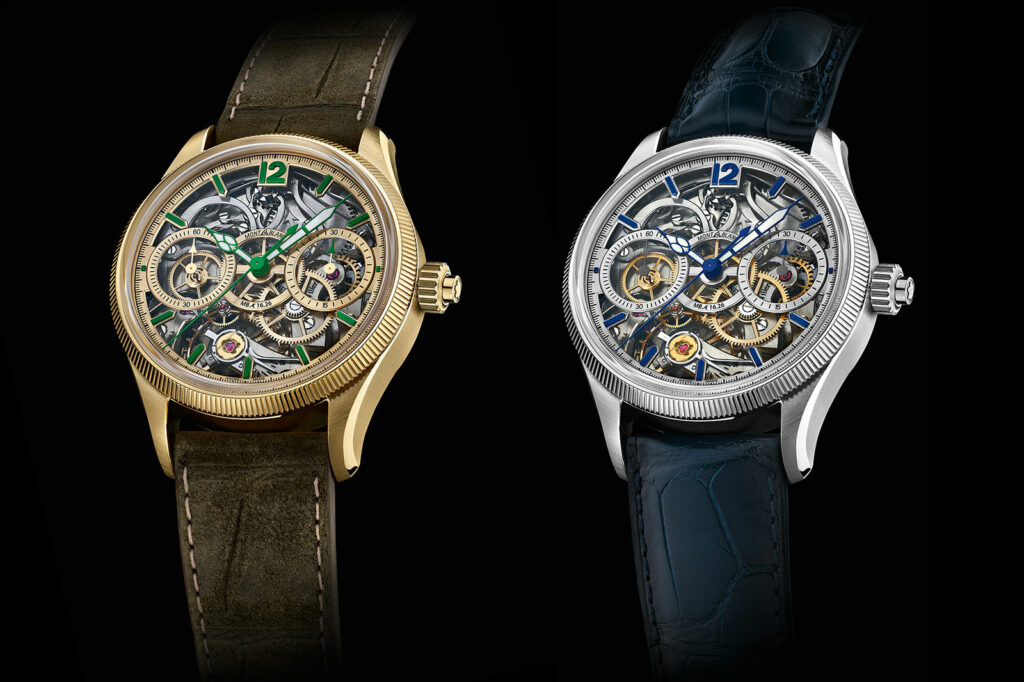
Their uniqueness lay in the way Montblanc approached the skeletonisation: not with a traditional method, but by reversing the calibre so to make the mechanical action of operating the chronograph visible from the dial side, without having to take off the watch. An operation which, according to Montblanc, required to add 21 components to the original MB 16.29 in order to reverse the time display; cleverly, the new skeletonised version of the MB 16.29 was named ‘MB 16.26’ with the final number turned upside down, just like the movement.

Last year Montblanc responded with another Unveiled Secret Minerva Monopusher Chronograph in steel. The main difference from the 2022 edition was in the aesthetics of the case, which featured an antiqued steel finish, achieved by coating the stainless steel in black, then manually washing and brushing it with quartzite and Mont Blanc limestone from La Combe Grède, the mountain in front of the Villeret factory.
MONTBLANC 1858 THE UNVEILED MINERVA MONOPUSHER CHRONOGRAPH
So this is where the new Montblanc 1858 The Unveiled Minerva Monopusher Chronograph presented at this year’s Watches and Wonders comes from. Equipped with a 43 mm steel case, it features two innovations compared to its more recent predecessors: an aesthetic novelty and a technical one. Let’s start with the aesthetic one, which in our opinion is the most interesting as it is unusual on a watch with such a traditional design.
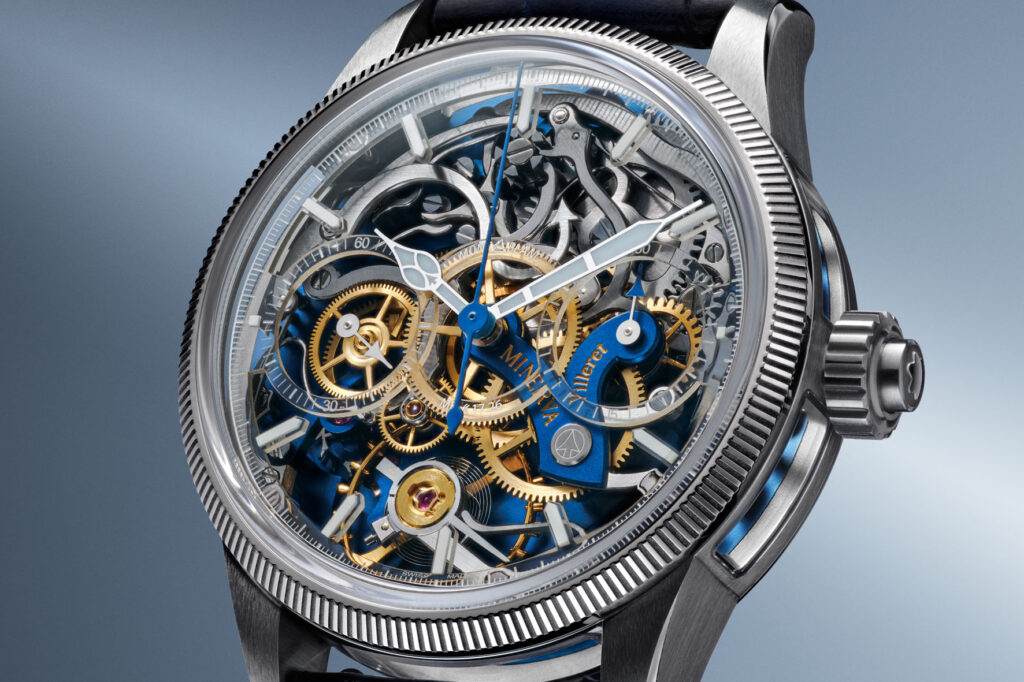
The first innovation consists of five apertures protected by sapphire crystal and located around the case middle. Thanks to them, light penetrates inside the case and passes through the movement, which is hand-wound and hand-finished. Thanks to this device, the calibre almost seems to be floating inside the case: it is visible from all sides, and the watch is characterised by a truly extraordinary depth. The entire watch has been designed precisely in such a way as to create an interplay of light and depth running through the pillar-mounted calibre, allowing the wearer to admire its components. The back of the watch is made of steel: had it been transparent, light would definitely have triumphed.
The other novelty is the calibre, no longer the MB M16.26 but its evolution, the MB M17.26. Obviously manufactured. Its main feature is the chronograph bridge which wasdisplacedabove the time-measuring movement. This way, Montblanc technicians and designers have highlighted this distinctive component, the design of which was patented in 1912.
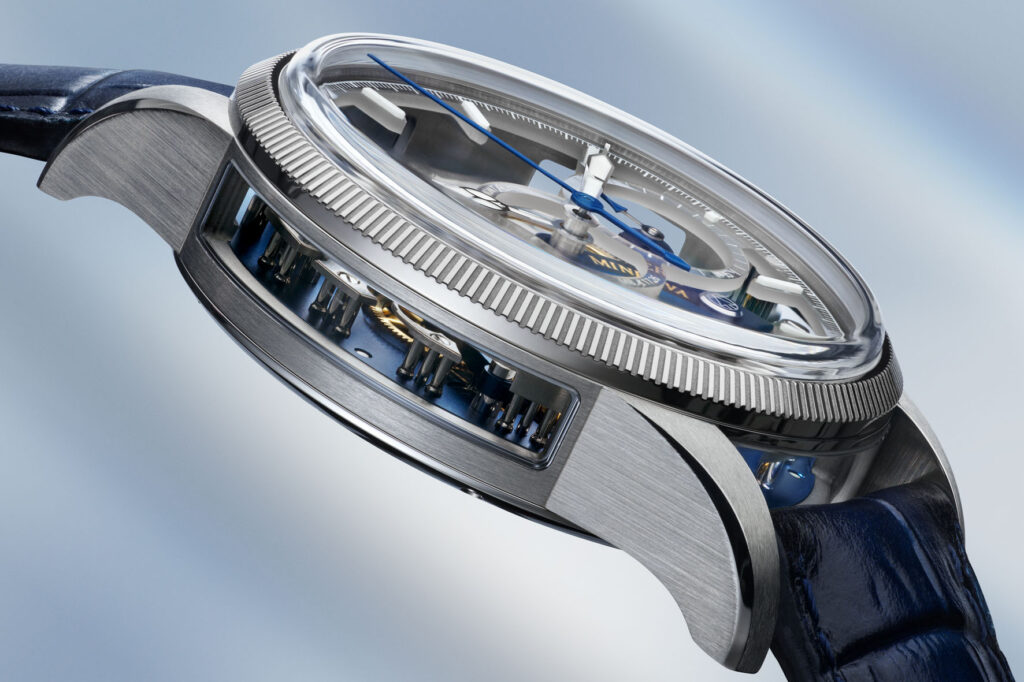
The nickel-silver plates and bridges are coloured in a contemporary shade of blue, contrasting with the rest of the movement, and echoing the colour of the shaded blue calfskin strap. The chronograph is driven by a column wheel with a horizontal clutch, while the calibre MB M17.26 works at a low frequency of18,000 vibrations per hour, with a power reserve of around 50 hours. As one might imagine, both the V-shaped bridges and the Minerva arrow are also present.
THE DIAL/NON-DIAL
The dial has nothing to dowith a classic one. It is made of sapphire crystal and all the chronograph indications are visible, so as to emphasise the work of the movement beneath them: 30-minute chronograph counter, small seconds display. The classic cathedral hands and hour markers are made of Super-LumiNova, a highly appropriate choice to promote readability on a dial/non-dial with a very complex architecture. The bezel is in white gold, as those of the 2022 and 2023 Montblanc 1858 Unveiled references.
The price of the watch is 49,000 euros and, in the best Minerva chronograph tradition, the new Montblanc 1858 The Unveiled Minerva Monopusher Chronograph is also produced in a limited edition: 100 pieces. A few more than for the 2022 and 2023 references, but still a limited edition that is both synonymous with exclusivity, and a hint of how complex it is to produce watches and calibres of this quality. After all, for the Romans, Minerva was, among other things, the goddess of the so-called ‘useful arts’, including architecture and engineering: what can better embody them than this chronograph?
By Davide Passoni


